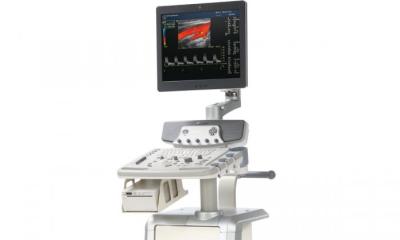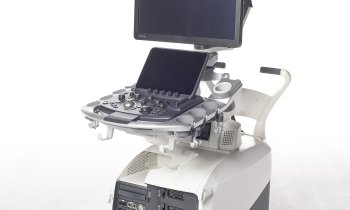EAU hot topic: Imaging in urological oncology today
Imaging prostate cancer in Europe
Big discussions are expected at the upcoming European Association of Urology (EAU) Congress in Stockholm* when urologist Dr Jochen Walz (right), of the Urological Department at the Institute Paoli-Calmettes, Marseilles, France, presents the forum: Imaging in Europe: Who, where, what, how many! and M F Coelho, of the European Society of Urological Imaging (ESUI) describes the Clinical utility of modern urologic ultrasound. In the run up to the event, Dr Walz spoke with Karoline Laarmann of European Hospital, about the particular difficulties in prostate cancer (PCa) diagnosis and the imaging procedures currently used for its detection

Dr Jochen Walz: ‘One particular focus of the symposium, as well as the congress, will certainly be prostate cancer (PCa) diagnostic imaging procedures. Currently, PCa cannot be safely diagnosed with imaging procedures, as is possible for kidney cancer with CT or MRI, because the prostate and tumour tissues do not have sufficiently different characteristics that can be distinguished via ultrasound, X-ray or MRI. CT, for instance, is completely useless for prostate examinations because its soft-tissue resolution is not good enough. This is why it is always necessary to biopsy when PCa is suspected, to thoroughly examine the tissue. This tissue removal is carried out in a randomised manner via transrectal ultrasound (TRUS) because of insufficient PCa localisation. It is used to guide the biopsy in the right direction, i.e. particularly the peripheral zone — the most common position for carcinomas. TRUS-guided punch biopsy is therefore the standard procedure in prostate cancer diagnosis. The main problem in PCa diagnostics is the impossibility of reliable tumour localisation together with the inability to carry out precisely directed biopsies.’
How could ultrasound improve the future of PCa diagnosis?
‘There are three main approaches that would make the diagnosis safer. They all use certain characteristics of the tumour tissue that make it possible to tell it apart from healthy tissue and therefore to take a more selective biopsy. Elastography is a very promising procedure. It measures tissue elasticity with the help of a computer and so differentiates between healthy and diseased, often hardened tissue. Another procedure is contrast-enhanced ultrasound. It helps to make visible a possible enhanced blood flow, or differences in the vascular architecture of the cancerous tissue. The third procedure is computer-aided transrectal ultrasound (C_TRUS). An artificial neural network (a type of self-learning computer programme) analyses the fine grey-scale shades of the ultrasound image and utilises the tissue details hidden from the human eye. There will be a lecture on this subject during the ESUI event, by Dr Tillmann Loch — TRUS guided biopsies of the prostate: C-TRUS next generation. At the moment C-TRUS is still undergoing clinical trials.’
How is MRI for PCa detection?
‘In the detection, positioning and staging diagnosis of prostate cancer, multi-slice imaging procedures, such as MRI and MRS (magnetic resonance spectroscopy, development of metabolic maps of the prostate) are becoming increasingly important. In some countries, such as France, there is a tendency to systematically carry out MRI in staging, i.e. the determination of the size and spread of a tumour. At the Institute Paoli-Calmettes we have studied how pre-operative MRI compares with histopathological samples. However, our results were not really very satisfactory. The primary tumour localisation, for instance, concurred in only 50% of cases, and we found the results to be strongly dependent on the experience and level of specialisation of the radiologist. As this is something which is only rarely warranted I would say that MRI is currently not better than elastography, contrast-enhanced ultrasound or C-TRUS.
‘The distinct advantage of ultrasound-supported systems is that they are much cheaper than MRI and you are “on site”. If a suspect area has been detected then a biopsy can be carried out during the same procedure, without any delay. This is not the case with MRI, because it has to be carried out by a radiologist with different equipment. To that we need to add the difficulties involved in transcribing the information from the MRI examination into the ultrasound examination and to take biopsies from suspected lesions with the help of ultrasound. This is why it’s important that radiologists gain special competencies and work in close cooperation with urologists if we want to solve this problem and use MRI in PCa diagnosis.’
* Dr Weiss will present his lecture on Wednesday, 18 March at the EAU Congress, to be held in Stockholm from 17-21 March. Further EAU and urology reports: EH pages 8-10
01.03.2009










